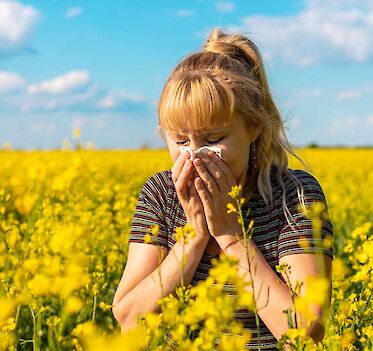Breathe easier in East Texas—know what’s in the air and when to get help.
If you’ve ever felt like your nose knows when the seasons change in Longview, TX, you're not alone. From sneezing fits in the spring to sinus pressure in the fall, East Texas residents know allergy season is more than just a season; it’s a year-round challenge.
Understanding what allergens peak and when can help you prepare, manage symptoms, and know when it’s time to visit your local HealthCARE Express clinic for fast, effective relief.
Spring (March–May): Tree Pollen Takes Over
Longview springs are beautiful, but they come with a price. Tree pollen levels soar between March and May, triggering itchy eyes, sneezing, and runny noses.
“Oak, cedar, and pine are the biggest culprits in East Texas spring allergies,” explains Dr. Spencer Reynolds of HealthCARE Express. “Even a light breeze can send pollen into overdrive.”
Quick Tips:
- Monitor local pollen counts
- Keep windows closed during peak hours
- Shower and change clothes after being outdoors
Summer (June–August): Grass & Mold Spores
Summer heat brings high humidity, which means increased mold growth and grass pollen exposure, especially for those who spend time mowing lawns or walking on trails.
“Grass allergies tend to spike mid-summer, and mold thrives in damp areas, especially after summer storms,” says Dr. David Caltrider. “If you're experiencing lingering sinus congestion or fatigue, allergies might be to blame.”
Watch for:
- Increased sneezing and sinus pressure
- Worsening symptoms after mowing or rain
- Mold sensitivity indoors and out
Fall (September–November): Ragweed & Weed Pollen
As temps drop, ragweed pollen rises. Just one plant can release up to a billion pollen grains—easily spread by East Texas winds.
“Ragweed is relentless in the fall. Even if you don’t see it, you’re likely breathing it in,” notes Dr. Reynolds. “It’s one of the most common causes of hay fever in this region.”
Pro tip: Start allergy treatment before symptoms begin. Antihistamines work best when taken early.
Winter (December–February): Dust & Indoor Allergens
Even when outdoor pollen is low, indoor triggers like pet dander, dust mites, and mold can stir up trouble—especially as homes stay sealed against the cold.
“People don’t often associate winter with allergies, but we see a lot of sinus issues caused by indoor irritants,” says Dr. Caltrider. “The holidays can also stir up sensitivities with real trees, candles, or pet visitors.”
Keep air clean:
- Use HEPA filters
- Vacuum and dust weekly
- Keep humidity levels balanced
When to Seek Allergy Relief at HealthCARE Express in Longview, TX
If over-the-counter meds aren’t cutting it—or if allergy symptoms are affecting your work, sleep, or energy—come see us. HealthCARE Express in Longview offers:
- Same-day walk-in visits
- Allergy symptom evaluation
- Prescription-strength antihistamines
- Steroid shots for fast relief
“Our goal is to help Longview residents feel better, faster,” says Dr. Reynolds. “You don’t have to suffer through allergy season. We’re here to help year-round.”
Visit Us Today
Stop by HealthCARE Express at 1509 W Loop 281, Longview, TX 75604, open Monday - Friday from 8 AM to 8 PM, and Saturday 8 AM to 4PM. Walk in or book online at gohce.com/longview.
